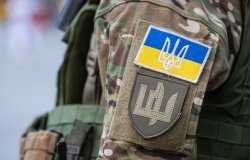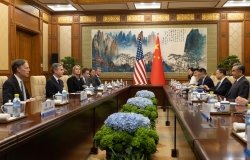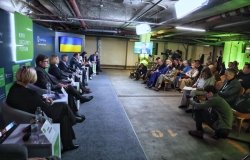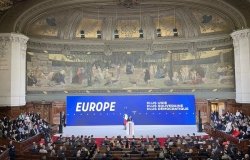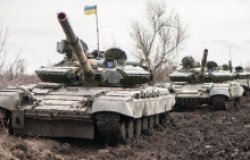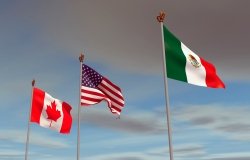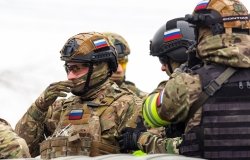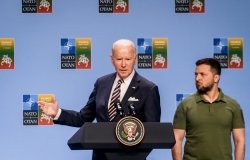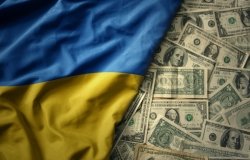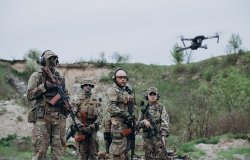Kennan Cable No. 91: Empire and Survival in Ukraine
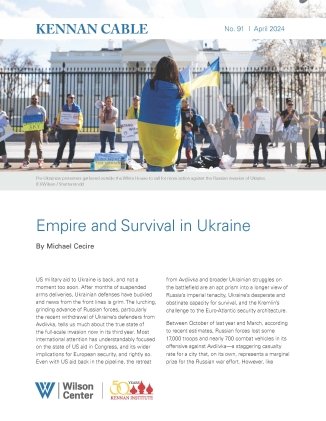

US military aid to Ukraine is back, and not a moment too soon. After months of suspended arms deliveries, Ukrainian defenses have buckled and news from the front lines is grim. The lurching, grinding advance of Russian forces, particularly the recent withdrawal of Ukraine’s defenders from Avdiivka, tells us much about the true state of the full-scale invasion now in its third year. Most international attention has understandably focused on the state of US aid in Congress, and its wider implications for European security, and rightly so. Even with US aid back in the pipeline, the retreat from Avdiivka and broader Ukrainian struggles on the battlefield are an apt prism into a longer view of Russia’s imperial tenacity, Ukraine’s desperate and obstinate capacity for survival, and the Kremlin’s challenge to the Euro-Atlantic security architecture.
Between October of last year and March, according to recent estimates, Russian forces lost some 17,000 troops and nearly 700 combat vehicles in its offensive against Avdiivka—a staggering casualty rate for a city that, on its own, represents a marginal prize for the Russian war effort. However, like Bakhmut or Severodonetsk before it, single-minded Russian attacks en masse towards questionable territorial objectives have, even after achieving breakthroughs, done little to appreciably impact the direction of the war. In some cases, they have even heralded Ukrainian counteroffensives. In such engagements, Ukrainian forces made industrious use of Russian-ruined, treacherous urban terrain to hold and attrite much larger Russian attacking formations. Estimates of upwards of nearly 400,000 Russian combat losses since the invasion was launched in 2022 should be seen in this context.
Yet Avdiivka’s fall is invariably associated, and is symbolically coterminous, with US failures to provide long-promised military aid and wider concerns about Western political fecklessness in the face of evident Russian imperial aggression. Although it is uncertain to what extent Avdiivka’s defenses were tenable, given inherent Russian advantages in material superiority and mass from the start, there is widespread agreement in the analytical community that troop and, particularly, ammunition shortages sharply hindered the city’s defenses.[1] Because of relatively modest gains from Ukraine’s 2023 summer counteroffensive and the subsequent assessments of operational stalemate, alarm has set in across the Euro-Atlantic as the mythological powers of seemingly infinite Russian mass seem to have materialized. Increasingly, analysts had been taking fears of Russian victory in Ukraine seriously.
An Empire Called Forever
At its low points, the heroic, ferocious stand of a few in Avdiivka against the inexorable advance of Russian mass might seem to describe the war in Ukraine as a whole. The restoration of US arms flows notwithstanding, the prospects of Russian victory in Ukraine had appeared to be a more urgent consideration, which stoked understandable concerns in frontline European states over the possibility of an eventual direct conflict with Russia. Just this year so far, Romanian, Danish, and German political and military leaders have issued warnings about the potential of open war with Russia should Ukraine fall.[2] France, most significantly, has adopted a more forward-leaning policy in support of Ukraine’s defense. It has even refused to rule out the potential deployment of troops,[3] which according to some sources are already on the ground in limited capacities.[4] However, besieged and wounded though it has been, Ukraine’s agency and capacity for survival in recent months has been underrated. When given the basic means of self-defense, Ukraine has proven over and over again to be more than equal to the task. With US arms now again en route, the world will likely be reminded of this fact.
At the same time, Russia’s destructive tenacity in pursuit of demonstrably imperial aims has been evident to Ukraine, and other wary neighbors, for some time. Russia can seem an empire forever called to external expansion and dominion, and today has made its regime legitimacy inseparable from aggressive militarism and severe historical revisionism. Even a year ago, we could see Russia’s willingness to accept otherwise unfathomable losses, endure extended material privation, and risk domestic political instability in pursuit of victory in Ukraine.[5] Ukrainian national resilience and superior battlefield leadership, alongside a hodgepodge of secondhand Western and Soviet weaponry, was often enough to best Russian forces in the field. However, it has not been enough on its own to dislodge Russia’s imperial agenda, particularly as western arms have petered out.
As such, a more complete Ukrainian victory demands a more aggressive and urgent Western policy of defensive aid. While certain high-value Western systems were eventually green-lit—such as F-16s, key long-range strike platforms, and cluster munitions—they came after much consternation and delay, typically in limited quantities, and often lagged battlefield conditions. Ukraine has never been able to enjoy decisive advantage in any one military capability, and no superiority of mass in any domain. Over the past year, Russia has leaned into its quantitative edge as a decisive (if cumbersome) tool, while implementing some key battlefield lessons,[6] to gain momentum.
Putin’s prosecution of its war on Ukraine demonstrates that imperialism is not merely a feature of Russian strategic thinking, but perhaps its central feature. It should give Western defense analysts and policymakers pause that Russia has been both willing and able to absorb such horrendous losses in such a gruesome enterprise. These losses have been made more palatable to the elite, certainly, by the systematic and deliberate exploitation of ethnic minority, indigenous, and marginalized populations in the imperial periphery.[7] Any assumptions that Russian political or material exhaustion will be sufficient to compel the abandonment of the war are implausible in the near-term, except perhaps in the face of overwhelming and immovable Ukrainian military might. Just as Ukraine’s capacity for survival should not be underrated, neither should analysts ignore Russia’s willingness to broadly prosecute a war of national mobilization, its evident capacity for regeneration, and perhaps even the perceived political advantages to the Kremlin of a totalitarian war footing.
A Warrior Republic
Although it may not always be recognized in Western capitals, Ukrainians have no doubt that they are fighting an existential war in the most literal sense: for the preservation of their state, their national identity, and their very lives. As highlighted in the OSCE Parliamentary Assembly’s Vancouver Declaration last summer, by recent Parliamentary Assembly of the Council of Europe statements,[8] and further among several Euro-Atlantic national parliaments, the Russian pattern of atrocities in Ukraine is deliberate and recognizably genocidal in its character.[9] Any cursory review of Russian state news media reveals a casual embrace of Ukrainian cultural and physical extermination as an operational necessity. Even outside of growing scholarly consensus and international recognition, that reality is a salient organizing principle in Ukrainian society.[10] Ukrainians are under no illusions about the enemy they face and the existential consequences of defeat.
However, while Russian victory may have seemed a possibility, especially in the wake of the Avdiivka withdrawal, neither is it necessarily an obvious outcome—despite Russia’s increasingly totalitarian war footing and the fatalist lurch in Western media and policy discourse. For one, most conceptions of Ukrainian victory tend to be tied to the full restoration of Ukrainian internationally recognized territory. However, territorial gain is not a sufficient indicator for the achievement of either Ukrainian or Russian political aims. For Ukraine, the preservation of an independent and recognizably Ukrainian nation-state with the integral features of its territorial boundaries would be a legitimate victory. By contrast, Russian victory depends on the decapitation of Ukrainian political leadership and the wholesale subjugation of the Ukrainian nation-state. For at least the foreseeable future, even absent US military aid, the first scenario remains far more likely than the second one.
At the same time, the months-long suspension of US military aid lends clues about the strategic calculus for Ukraine and the wider region, where outright defeat in the near- to medium-term is but one (low) possibility. Other potentially higher propensity scenarios are entirely conceivable and may even be already playing out—and in some cases pose other types of risks.
For one, the US strategic detour did not appear to contribute to a collapse in European support for Ukraine, but rather served as a galvanizing force for a more muscular approach to Ukraine. France’s more hawkish turn is only one expression of this shift. The European Union’s recently announced 50-billion-euro package for Ukraine, as well as additional pledges for financial and military aid, highlight a converging appreciation for the stakes among many European leaders. And although Ukraine had come to rely primarily on the United States for its pipeline of munitions stocks, their abrupt interruption led to a diversification approach, as Washington was no longer seen as entirely reliable. While it is a positive dynamic to see Europe playing a more proactive role in Ukrainian and continental security, broader European remilitarization amid US disengagement could threaten the postwar success of arresting ruinous cycles of intra-European warfare.
More muscular European rhetoric and actions during suspended US arms deliveries also revived quiet speculation that European states, acting independently or in some kind of secondary coalition outside of NATO or the EU, could be forced to intervene directly to prevent Russian victory and Ukrainian defeat. While this possibility is typically muted in public, it is a scenario that has been taken seriously within some Western analytical circles.[11] It is widely believed that Poland alone, for example, likely has the military and material capacity to successfully intervene and decisively turn the tide of the conflict; other potential Central/Eastern European and possibly Nordic members of such a coalition are not difficult to conceive. Such an intervention, however successful, would widen the war and likely lead to a fundamental crisis within NATO. Yet, if Russia is seen as likely to test NATO’s Article 5 mutual defense clause, as is increasingly believed, a preemptive military action to rescue Ukraine from capitulation may be a preferable option for several frontline European states.
There are also risks to more complete abandonment of Ukraine. Alone, Ukraine would further its transformation as a warrior republic, where the maintenance of war in the desperate enterprise of survival is the prevailing principle under which all other ideals are subsumed. This Ukraine would be unconstrained by the niceties of Western guardrails and caveats delivered out of concern for escalation and would take the war to Russia in an uncompromising fashion, with a ferocity could make some of its liberal international supporters wince. The debate over Ukrainian raids against Russian oil refineries, an entirely legitimate military target, is a relatively low-stakes example of this phenomenon playing out recently.[12] It should be noted that Ukraine continues to act with relative restraint, including its attacks within Russian borders, reflecting deference to US and European admonitions to limit the scope of war. However, if Western support dawdles and dwindles, and the specter of successful Russian genocide looms, incentives for restraint deplete.
Left isolated, it is difficult to imagine a scenario of where Kyiv does not seriously entertain nuclear rearmament, given the large nuclear arsenal it surrendered in exchange for Western security guarantees under the Budapest Memorandum. While ample ink has been spilled over the failure of those guarantees and the harm it has done to nuclear nonproliferation as a principle or concept, in no country is this betrayal more evident and immediate than in Ukraine. Russia’s invasion itself seems to have crystallized the decision of Ukrainian nuclear disarmament as a potential error, given the eminent failure of the Bucharest Memorandum and the privileged position that nuclear powers enjoy. Meanwhile, western-provided arms deliveries are variously sourced, with some even arriving in poor or unusable condition, and tend to follow cycles of Western deliberation and delay. In addition, both the arms and instructions for their use are burdened with caveats, illustrating powerful fears over Russian nuclear blackmail. Even with robust US and European aid, it would be understandable for Kyiv to consider the deterrent effect of an independent nuclear strike capability as significantly more valuable than the warm regards of Western diplomats.[13]
Crumbling Edifices
Anticipating Russian victory, under even current conditions, underplays Ukrainian strategic agency as well as significant other downstream risks. Meanwhile, although the threat posed by a total Russian victory is widely discussed, the potential risks of broad Russian advances without Ukrainian collapse have not been adequately considered. For example, it is conceivable that Ukraine, desperate in its war for survival, triggers a wave of nuclear proliferation in Europe as the nominally protective fabric of the Euro-Atlantic security architecture lies in tatters. In this scenario, US influence and the power it derives from the alliance systems it created could be severely compromised, undermining already narrowing options for responding to contingencies elsewhere around the globe, including in the Indo-Pacific.
In the immediate term, the demands of the moment are plain enough. Ukraine must see robust and unified support from both the United States and Europe to stave off Russian advances and create the conditions for military victory—and with urgency. Russian forces must face not only extended losses in manpower and resources, but such losses without hope of victory. For Russia, Ukraine must symbolize not imperial tenacity, but hubris, incapacity, and strategic impotence. Ukraine, and this war, should be associated in the Russian mind with total military and political defeat. In practical terms, the resumption of US aid is a welcome and necessary development, but insufficient. The shape of that aid should be more purposeful and emphasize the ability for Ukraine to not merely attrite Russian forces, but to make rapid advances in the near to medium term. This will require more comfort with Ukrainian raids in Russia, the provision of long-range precision strike in volume, and certain escalation dynamics inherent in such an approach.
Looking at the medium term, while Ukraine’s territorial contours in a ceasefire should be at the Ukrainians’ sole discretion, the overriding determinant of victory is the permanent preservation of Ukrainian independence and fundamental territorial integrity to a maximally practicable degree. The dread that might accompany any hint of a ceasefire proposal will come not from the ceasefire itself, but because of fear of a return to a status quo ante that assumes, in the absence of all evidence, that Russia would negotiate in good faith. More fundamentally, a viable European security depends on an inclusive and enforceable architecture that dispenses with the notion that Russia is a legitimate security stakeholder and banishes the gray zones where Russia has most actively and successfully meddled. And the only way to do that is full Ukrainian inclusion in the Euro-Atlantic security architecture—the EU and NATO, respectively, or their equivalents.
In the longer term, Russia must be dealt with plainly, based on its pattern of action, and not its deliberate misrepresentation and weaponization of international obligations and norms. Certain facts must be confronted and hardwired into Western approaches towards Moscow, which neither shares our values nor a common conception of peace. First, that for all its existence, Russia has always been an empire—one with varying periods of expansion and decline. The Russian imperium has been either a ruler or menace to its neighbors, and a reliable spoiler to dreams of a sustainable European peace. As with an aggressive Soviet Union, only hard constraints on Russian imperial ambitions can check these tendencies and coax some baseline of cooperation. Similarly, a more radical reimagining of Russia is in order: not as a partner or a political equal, but as a revanchist and unreconstructed empire without hope for peacefulness, much less democracy, until its imperial moorings are severed. This requires, at minimum, a Russia policy that proactively checks external aggression and interrogates its internal coloniality.
For now, Western analysts and policymakers should look to the war in Ukraine not only as a function of Russian aggression, but a Ukrainian war for survival that transcends Western conceptions or expectations around escalation dynamics or political polarization. For Ukraine, this war could be its last war if Russia is victorious, and the end of its civilization. If it succeeds, however, Ukraine could be the cornerstone of a new age of Euro-Atlantic security and stability and a premier military power in the Black Sea region in its own right. But with or without Western aid, if anything has been made clear over the past two years, Ukraine and its people will not fade quietly.
Michael Hikari Cecire is a senior policy advisor at the United States Commission on Security and Cooperation in Europe, also known as the US Helsinki Commission. He is also an adjunct associate professor at Georgetown University’s Security Studies Program. These views are his own.
[1] Samya Kullab, "Analysis: A Key Withdrawal Shows Ukraine Doesn’t Have Enough Artillery to Fight Russia," Associated Press, February 19, 2024, https://apnews.com/article/russia-ukraine-avdiivka-war-063ab1bd47a500ad4a815b12f3d1386d
.[2] Sergey Goryashko, "We Need to Be Ready for War with Putin, Romania’s Top General Says," Politico, February 1, 2024, https://www.politico.eu/article/we-need-to-be-ready-for-war-with-putin-says-romanias-top-general/; "Danish Defence Minister Warns Russia Could Attack NATO in 3–5 Years—Media," Reuters, February 9, 2024, https://www.reuters.com/world/europe/danish-defence-minister-warns-russia-could-attack-nato-3-5-years-media-2024-02-09/; and Nicolas Camut, "Putin Could Attack NATO in ‘5 to 8 Years,’ German Defense Minister Warns," Politico, January 19, 2024, https://www.politico.eu/article/vladimir-putin-russia-germany-boris-pistorius-nato/.
[3] Sylvie Corbet, "Macron Again Declines to Rule Out Western Troops in Ukraine, but Says They’re Not Needed Now," Associated Press, March 14, 2024, https://apnews.com/article/france-macron-ukraine-troops-caa788d2455dafb06dd87f79c4afe06f.
[4]Elise Vincent and Philippe Ricard, “Ukraine's Western allies already have a military presence in the country,” Le Monde, March 1, 2024, https://www.lemonde.fr/en/international/article/2024/03/01/ukraine-s-western-allies-already-have-a-military-presence-in-the-country_6575440_4.html
[5] Michael Hikari Cecire, "Ukraine as Russian Imperial Action: Challenges and Policy Options," Royal United Services Institute, March 9, 2023, https://rusi.org/explore-our-research/publications/commentary/ukraine-russian-imperial-action-challenges-and-policy-options.
[6] Mick Ryan, “Russia’s Adaptation Advantage,” Foreign Affairs, February 5, 2024, https://www.foreignaffairs.com/ukraine/russias-adaptation-advantage.
[7] Mariya Vyushkova and Evgeny Sherkhonov, "Russia’s Ethnic Minority Casualties of the 2022 Invasion of Ukraine," Inner Asia, May 2, 2023, https://brill.com/view/journals/inas/25/1/article-p126_11.xml#FN000009; and Laura Solanko, "Where Do Russia’s Mobilized Soldiers Come From? Evidence from Bank Deposits," BOFIT Policy Brief, February 21, 2024, https://publications.bof.fi/handle/10024/53281.
[8] Parliamentary Assembly of the Council of Europe, The forcible transfer and ‘russification’ of Ukrainian children shows evidence of genocide, says PACE, April 27, 2023,https://pace.coe.int/news/9075/the-forcible-transfer-and-russification-of-ukrainian-children-shows-evidence-of-genocide-says-pace?__cf_chl_tk=nsD2fTQl_qXokDkIipfYF4Y7yd1HqcxNvt6SWP474.c-1713537611-0.0.1.1-1855
[9] OSCE Parliamentary Assembly, Vancouver Declaration and Resolutions Adopted by the OSCE Parliamentary Assembly at the Thirtieth Annual Session, July 4, 2024, https://www.oscepa.org/en/documents/annual-sessions/2023-vancouver/declaration-29/4744-vancouver-declaration-eng/file.
[10] Denys Azarov, Dmytro Koval, Gaiane Nuridzhanian, and Volodymyr Venher, "Understanding Russia’s Actions in Ukraine as the Crime of Genocide," Journal of International Criminal Justice 21, no. 2 (June 13, 2024): 233–264, https://academic.oup.com/jicj/article/21/2/233/7197410; and Kristina Hook, "Many Ukrainians See Putin’s Invasion as a Continuation of Stalin’s Genocide," November 25, 2023, https://www.atlanticcouncil.org/blogs/ukrainealert/many-ukrainians-see-putins-invasion-as-a-continuation-of-stalins-genocide/.
[11] Patrick Wintour, "Nato Members May Send Troops to Ukraine, Warns Former Alliance Chief," The Guardian, June 7, 2023, https://www.theguardian.com/world/2023/jun/07/nato-members-may-send-troops-to-ukraine-warns-former-alliance-chief.
[12] Christopher Miller, Ben Hall, Felicia Schwartz, and Myles McCormick, "US Urged Ukraine to Halt Strikes on Russian Oil Refineries," Financial Times, March 22, 2024, https://www.ft.com/content/98f15b60-bc4d-4d3c-9e57-cbdde122ac0c.
[13] Josh Rogin, "Ukrainians Want to Know If NATO Still Wants Them," Washington Post, February 23, 2024, https://www.washingtonpost.com/opinions/2024/02/23/ukraine-munich-nato-membership/.
About the Author

Michael Cecire

Kennan Institute
The Kennan Institute is the premier US center for advanced research on Eurasia and the oldest and largest regional program at the Woodrow Wilson International Center for Scholars. The Kennan Institute is committed to improving American understanding of Russia, Ukraine, Central Asia, the South Caucasus, and the surrounding region though research and exchange. Read more
